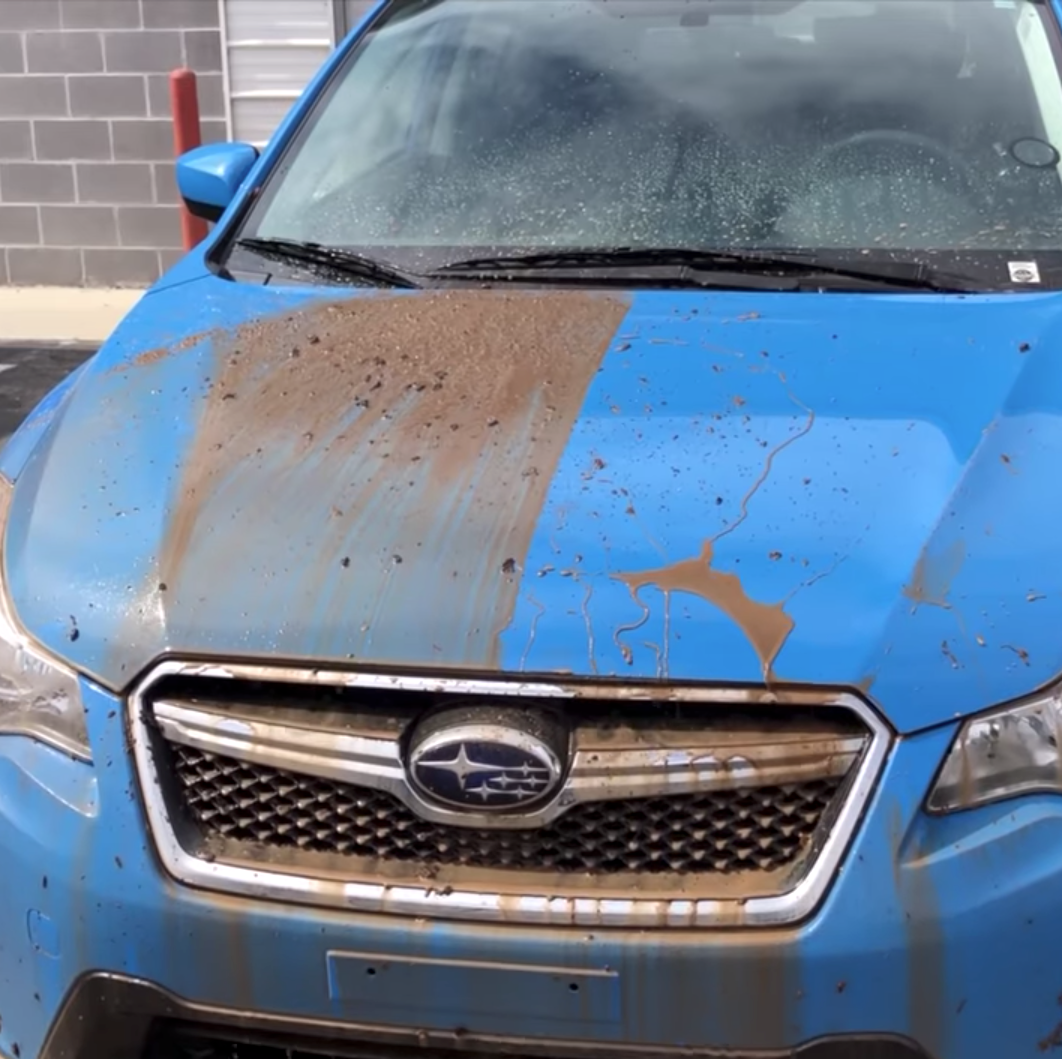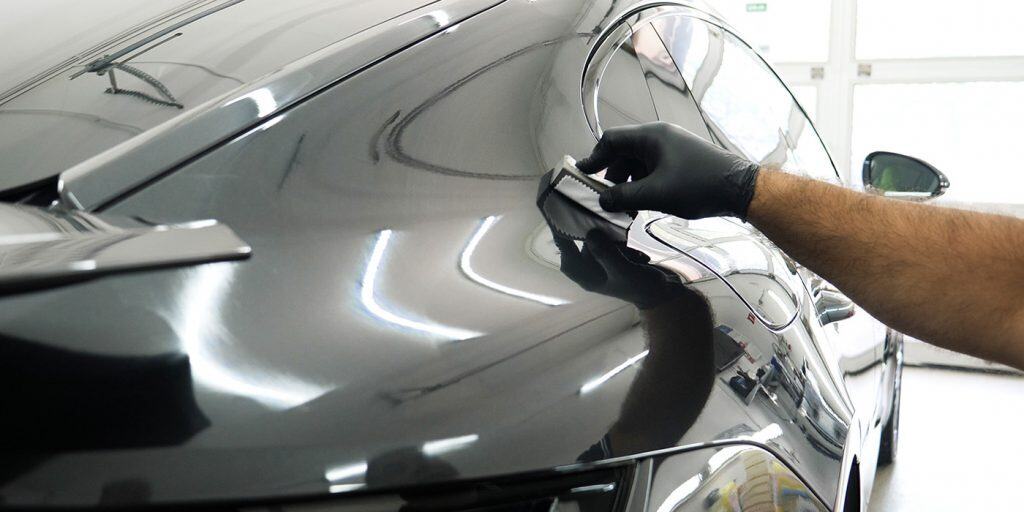Ceramic Coating for Cars: The Ultimate Solution for a Glossy Finish
Ceramic Coating for Cars: The Ultimate Solution for a Glossy Finish
Blog Article
Ceramic Layer vs. Standard Wax: Which Supplies Much Better Long-Term Protection?
The dispute between ceramic coverings and typical wax for car security has garnered considerable focus among vehicle fanatics and experts alike. While both satisfy of safeguarding paint, their distinctions in durability, application, and long-lasting upkeep prices may affect a consumer's selection. Ceramic finishings boast exceptional durability and resistance to environmental variables, yet the intricacy of their application questions concerning ease of access and functionality. As we discover these contrasting alternatives, it becomes important to consider not only the prompt benefits yet likewise the effects for automobile care over time.
Introduction of Ceramic Covering
Ceramic finish has actually gained significant appeal among vehicle fanatics and detailers alike because of its sophisticated safety top qualities. This ingenious technology is developed to develop a sturdy, hydrophobic shield over a lorry's paint surface, considerably enhancing its resistance to environmental impurities such as dirt, UV rays, and chemical spots. Unlike conventional wax, which gives a short-lived layer of defense, ceramic coatings bond at a molecular level with the paint, supplying durable durability-- frequently extending beyond 2 years with correct maintenance.
The application process entails thorough prep work of the vehicle's surface, consisting of cleaning and brightening to guarantee optimal adhesion. Once applied, the finishing remedies to form a durable layer that not only adds depth and gloss to the paint yet also streamlines maintenance. With its hydrophobic buildings, ceramic finishing enables water and dirt to slide off even more conveniently, decreasing the frequency of cleans and decreasing the danger of swirl marks.
Furthermore, ceramic coverings are offered in numerous solutions, allowing customers to select products customized to their certain demands and preferences. On the whole, ceramic finishing stands for a substantial development in paint defense innovation, providing superior performance compared to conventional choices.
Introduction of Standard Wax
Typically considered a staple in automotive treatment, wax functions as a popular selection for those seeking an uncomplicated approach to enhance and protect their car's paint - ceramic coating. Automotive wax usually makes up natural components, such as carnauba, or synthetic compounds, developed to create a protective layer on the surface area of the paint. This layer not just improves the vehicle's gloss and radiate but also supplies a barrier against environmental contaminants
The application of wax is usually straightforward, making it obtainable for both experts and do it yourself lovers. It can be used by hand or machine, permitting convenience in the describing process. When applied, wax calls for a healing period, after which it solidifies to develop a protective covering. Wax is additionally recognized for its ability to push back water, promoting a beading effect that aids in the avoidance of water places and rust.
Nevertheless, while wax works for improving the visual allure of an automobile, it is necessary to keep in mind that the defense it supplies might demand much more regular reapplication contrasted to alternative items, such as ceramic finishings. In general, traditional wax continues to be a popular alternative for those prioritizing simplicity of usage and immediate visual renovation.
Durability and Durability Contrast
While both ceramic coverings and conventional wax deal safety benefits for automotive paint, their toughness and durability vary substantially. Traditional wax, generally made from all-natural carnauba or artificial polymers, usually offers a protective layer that lasts approximately 3 to six months. This relatively brief life-span necessitates normal reapplication to preserve optimum protection.
In contrast, ceramic finishes are crafted from advanced nanotechnology, forming a covalent bond with the paint surface area. This causes a robust, hydrophobic layer that can sustain for two to five years, depending upon the item and ecological conditions. The exceptional resilience of ceramic layers is attributed to their chemical structure, which uses enhanced resistance to scrapes, UV rays, and oxidation.

Security Versus Environmental Variables
Safeguarding a lorry's paint from ecological aspects is critical for maintaining its appearance and worth in time. Automobiles are frequently revealed to a variety of components, including UV rays, bird droppings, tree sap, acid rainfall, and road crud, every one of which can endanger the stability of the paintwork.
Ceramic coatings provide a robust defense versus these environmental aggressors. Unlike conventional wax, which can deteriorate promptly under UV direct exposure, ceramic layers develop a resilient, hydrophobic layer that resists the hop over to these guys dangerous effects of sunlight and toxic wastes. This sophisticated modern technology develops a chemical bond with the lorry's surface area, supplying superior defense that lasts for several years, even in severe problems.
Traditional wax, while easier to apply, commonly requires constant reapplication and provides minimal resistance to impurities and UV rays. In time, it can break down, leaving the paint vulnerable to scrapes and oxidation. In contrast, ceramic layers preserve their safety high qualities longer, considerably lowering the threat of paint damages and making sure that the lorry keeps its aesthetic appeal. Because of this, ceramic finishings are increasingly recognized as the remarkable choice for long-lasting defense against environmental aspects.
Application and Maintenance Distinctions
The techniques of application and subsequent maintenance for ceramic layers and traditional wax vary significantly, influencing the total customer experience and performance of each product. Ceramic coatings call for an even more intricate application procedure, usually entailing surface preparation that includes washing, decontaminating, and polishing the lorry. Once the surface area is ready, the ceramic coating is applied in a regulated setting, commonly needing specialist experience to guarantee correct curing and bonding to the paint.

While both products boost car appearance, the longer-lasting security supplied by ceramic finishes might justify their preliminary financial investment, regardless of the more requiring application process. On the other hand, standard wax continues to be a prominent option for those looking for an easier, albeit temporary, service.

Verdict
In verdict, ceramic important source coverings show substantial advantages over standard wax in regards to resilience and environmental management. With a life-span prolonging 2 to 5 years and premium resistance to UV rays, dust, and chemical spots, ceramic finishes use a much more efficient option for long-term vehicle maintenance. The application procedure may call for expert knowledge, the resulting expense savings and minimized regularity of reapplication underscore the worth of ceramic finishes for those seeking optimum automobile protection.
The argument between ceramic finishes and traditional wax for automobile protection has actually garnered considerable interest amongst auto fanatics and professionals alike. Unlike conventional wax, which offers a temporary layer of security, ceramic finishings bond at a molecular level with the paint, providing resilient resilience-- typically prolonging past two years with appropriate maintenance.
While both ceramic coverings and typical wax offer protective advantages for automobile paint, their toughness and durability differ considerably. For automobile lovers looking for long-lasting security, ceramic coatings provide a compelling benefit over standard wax products.
In final thought, ceramic layers demonstrate considerable benefits over standard wax in terms of durability and ecological protection.
Report this page